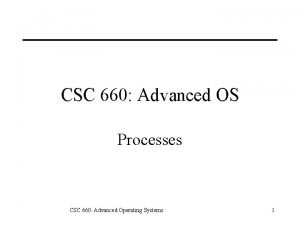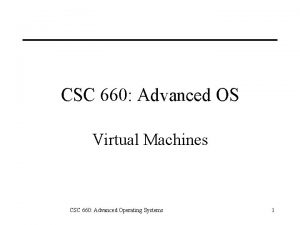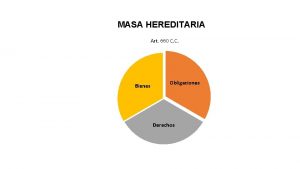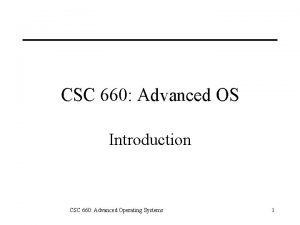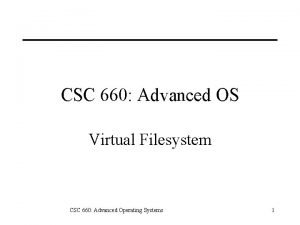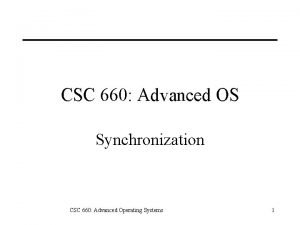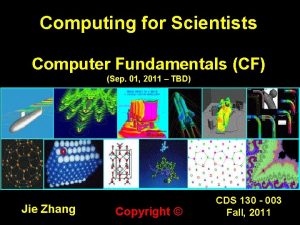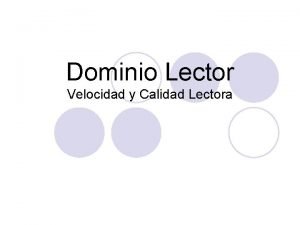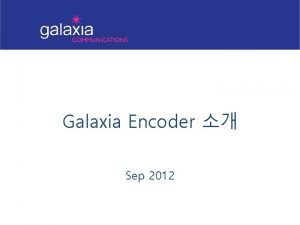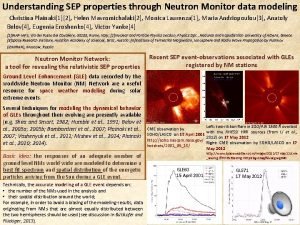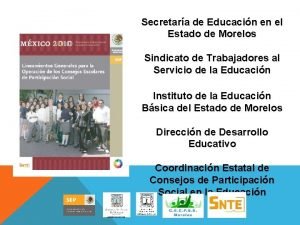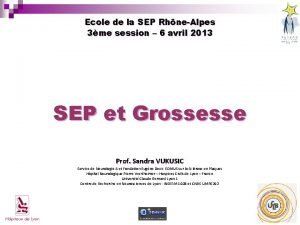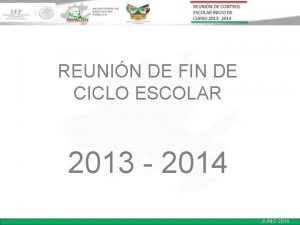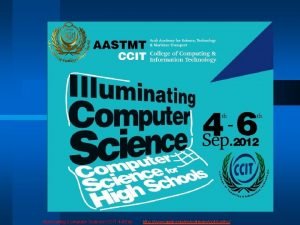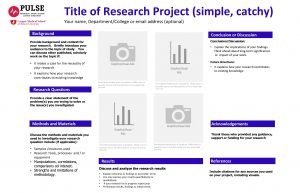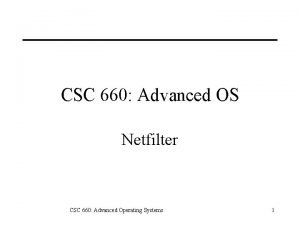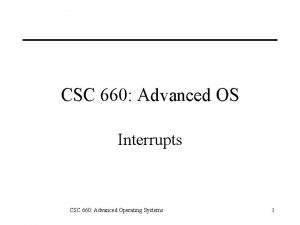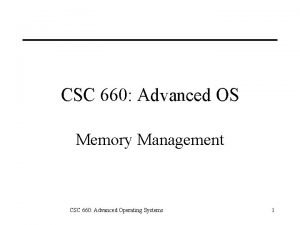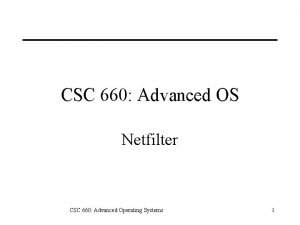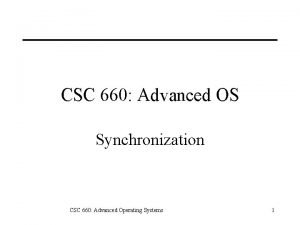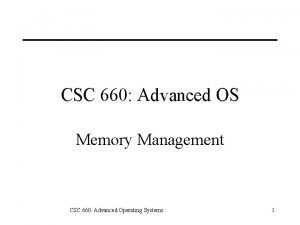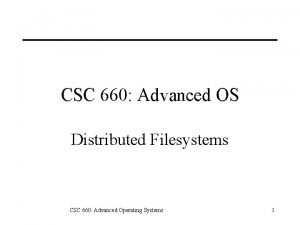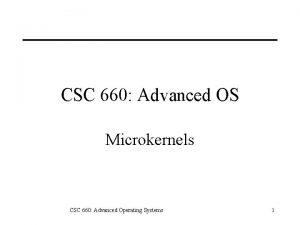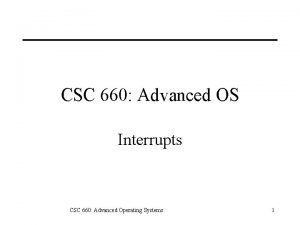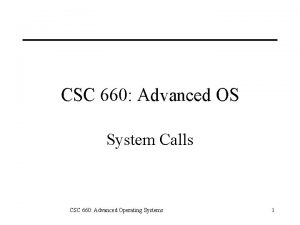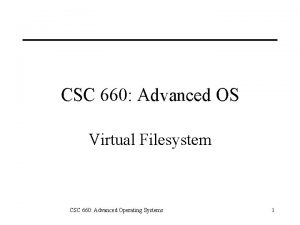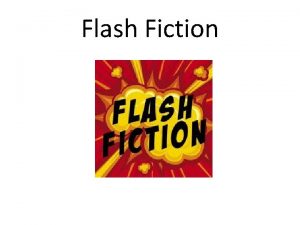CSI 660 Sep 26 Flash Team Presentations CSI



























































- Slides: 59

CSI 660: Sep 26 Flash Team Presentations CSI 660 – Networks Mining Instructor: Petko Bogdanov U at Albany, SUNY Website: http: //www. cs. albany. edu/~petko/classes/FALL 14. CSI 660/

Teams • Priya and Navita • Yu and Lin • Dhiraj and Bilal • Darshana and Sushant • Aditi and Shibani • Samarth and Jeel • Jinal and Saurabh • Ananya, Rohith and Bhavana • Gaurav • Trey and Ziqiang • Akhil and Tejas • Shashwat and Vaibhav

Klustering Your Friends Navita Jain Priya Balachandran Mary

Problem Description What is ego-network?

Related Work Learning to Discover Social Circles in Ego Networks - by Julian Mc. Auley and Jure Leskovec

Our Approach • Multilevel K way partitioning approach for Irregular graphs

Output Result Image taken from “Learning to Discover Social Circles in Ego Networks" by Julian Mc. Auley and Jure Leskovec from the Neural Information Processing Systems (NIPS) conference


Face Expression Recognition by Improved Elastic Bunch Graph Matching--- Yu Zhang & Lin Zhang We will employ the Gabor wavelet feature to describe the face expression and then classify the face expression via elastic graph matching.

Data set The Japanese Female Facial Expression(JAFFE) It contains 213 images of 7 facial expressions (6 basic facial expressions + 1 neutral) s e B e Face Database B

ollaborative Filtering with Multi -component Rating for Recommender Systems by Dhiraj Tanwar and Bilal Khan

INTRODUCTION Collaborative filtering based recommender system focuses on predicting new items of interest for a user based on correlations computed between that user and other users. We are going to use the concept of collaborative filtering using multi component rating to recommend movies to the users. There are two variables to characterize user behavior and items characteristics separately while most of the collaborative filtering use single component that is overall rating of the movies or of the items. The multi components attributes like stories, acting, scripts, directions , age , gender etc. to be rated which is brought into generation of movie recommendation.

MOTIVATION Currently the multi component rating recommender system uses the techniques and models like Flexible Mixture Model(FMM) and Expectation Maximization Algo with an assumption that allow them to factorize joint distribution and finally make predication and recommendation. However, there is catch point in this method that while working with the less training data they got a better prediction and retrieval but working with large training data then it leads to lower prediction. Secondly, the author assumes that there is no dependency among the variables and also correlation amount the component variable is zero just to avoid the complexity.

FINDING SOCIAL CIRCLES IN EGO-NETWORKS USING NETWORK ASSIGNMENTS AND PROFILE SIMILARITY. Presenters- Darshana Rane Sushant Obeja

Introduction Social network allows users to use and follow streams of data generated by hundreds of their friends and acquaintances. This in turn generates a large volume of information. There is a need to organize this information overload and create their personal social network. One of the main organizing principles in real-world networks is that of network communities, where sets of nodes organize into densely linked clusters. Organizing their networks by forming social circles.

Motivation Currently, users active on any social network like Facebook, Google+ and Twitter identify their circles either manually, or by finding friends who share a common feature. However, there are issues with these approaches , the first one is time consuming and does not update automatically as a user adds more friends. The second one does not take into consideration the individual features of the users communities, and can work poorly when profile information is missing or withheld.


Scope Circles can be more accurately predicted by exploiting relationships between the circles of multiple users. Optimization of the algorithm to work consistently for large number of nodes. The assumption that circles will be made up of groups of friends with common properties works well with less nodes and degrades the performance as the number of nodes increase, hence reconsideration of the assumption can help in optimizing the algorithm.

SOCIAL MEDIA MINING USING INFORMATION CASCADES Aditi and Shibani

WHY SOCIAL MEDIA MINING?

EXISTING SYSTEM ¡Mining approach by considering BURSTY subgraphs. ¡Use of two algorithms like DIBA for intrinsic graph model and SODA for social burst model. ¡Time analysis of the BURSTY subgraphs.

PROPOSED SYSTEM ¡Market Research ¡Inspection of subgraphs in detail manner. ¡Categorization of Feedback.

APPLICATIONS Social media has been increasingly used in a wide range of domains such as: ¡ Political campaigns (e. g. , presidential elections). ¡Market Research ¡Mass movements (e. g. , organizing Occupy Wall Street movements, Arab Spring). ¡Disaster, crisis response and relief coordination.


Community discovery in social networks -Samarth Shah -Jeel Patel University at Albany

Dynamic Graphs

Communities

Why the fuss? • The data set can be of any period of time, e. g. 1 month, 1 year, or a decade. • We are interested in a particular time-span when a group of nodes (intra-subgraph) interact the most. • For example, • a group of coworkers interact more when their project approaches deadlines. • Deluge of tweets ‘when’ a new product is released.

• Thank you

Advertisment Prediction By: Jinal Patel Saurabh Saxena

Motivation Ø Advertisement industry a multi-billion dollar industry Ø Internet; The best market to exploit and extract resources

Motivation

Paper’s Referred ØChieh-jen Wang and Hsin-His Chen, “Learning User Behavior for Advertisement click prediction” ØPerformance of the system has not been analyzed ØOnly 1 Phase feature selection algorithm has been used

What’s New ØSimilarity between two user, by common click advertisement. ØDeciding on how to display advertisement on website

THANK YOU!

Predicting Movie Popularity Based On Movie Attributes Using Social Media. Ananya Chinta Bhavana Bangaru Rohith Raj Chenna

What is this project? • Easy Guess • It’s in the title • Predicting Movie Popularity Based On Movie Attributes Using Social Media.

Why this project? The user predictions are generally extracted from comments on various movie websites. The user reviews however, are more commonly posted on social networking websites like Facebook. None of the papers that are published researched that domain for more efficiency in prediction of results. • In our paper we are suggesting an algorithm which helps us to predict the popularity of the movie before it is released. • We mine data from various social networking websites like Facebook, Twitter, Google +, Instagram, Foursquare etc. . and use it in the prediction of movie popularity and potential success.

Who gave it a shot? 1. Movie Popularity Classification Based On Inherent Movie Attributes Using C 4. 5, PART and Correlation Coefficient. This paper deals with the popularity prediction of a movie pre-release and financial aspects of the movie post-release but does not discuss about intervention of social media. 2. Predicting IMDB movie ratings using social media This paper deals a little with the social media( only twitter and Youtube) but does not talk about the prediction by taking into the relationship success history of the actors, actresses, directors or budget of the movie.

What do we aim to achieve? To predict the movie success or failure rate without any error by using social media. To make sure that the predictions also take the success rate of combination of people working together in the movie. To completely integrate movies into social media.

Thank You

LOCATION BASED TWITTER TREND AND EVENT DETECTION WITH NETWORK FOLLOWER DATA GAURAV GHOSH

MOTIVATION Twitter • 271 million monthly active users • 500+ million tweets per day Major Events • Real-time updates • High frequency + Short time = Burst • Location

IMPLEMENTATION • “Trendy” term list • Timestamp • Location • Location not mandatory for user • User follower network to find location • Random walk

Using Markov Chain to Predict the best treatment for patients By Trey Huang and Ziqiang Lin

SEER Data • We will use the data from seer. org to do the predict • Data contain the information of patients who has lung cancer in different cancer stage. • We will use the categorical to divide the patient in different group. • E. g. Age: 0 -17, 18 -24, 25 -45, 46 -64 and 64+ • E. g. Sex: Male and Female. • Combine with cancer stages: Stage 1, Stage 2, Stage 3 and Stage 4.

Categories, Stages and Treatments What we can learn in general: We will using Markov Chain to find out the “best” treatment (Surgery or Radiation) for each group on any given stage. What we can do: Based on all information we get, we can recommend a “best” treatment for new patient. For example, a classified type-C patient comes in as stage 1, we may give him radiation, a couple months later, his cancer change from stage 1 to 2, we will recommend him to have a surgery.

But, the reality is … can we really classify everyone in real world?

Basic idea: Feedback from what we have learn We can do some reverse engineering to do a better job on classification.

Where can we go from here?

Outliners and their potential values • Anomalies are not errors (sometimes) • New discoveries may come from them • For example, if we know type C patient overlaps B, C and E, while a type-C patient who has been following the “best” treatments did not get expected results…

Anomaly Detection in Computer Networks Akhil Chaturvedi Tejas Bhoir

Introduction and Motivation It deals with an efficient anomaly detection in traffics of computer networks. In business world, information is the key component. As the entire business is connected to the Internet there is potential for millions of attacks on the business.

Related Work Network Traffic Anomaly Detection Based on Packet Bytes by Matthew V. Mahoney. Novel Attack Efficient Computer Network Anomaly Detection by Changepoint Detection Methods by Aleksey S. Polunchenko. Sequential Probability Ratio Test (SPRT), Cumulative Sum (CUSUM) chart, Exponentially Weighted Moving Average (EWMA) and Shiryaev–Roberts (SR) procedure. INPUT---OUTPUT I/P Computer network system with lot of anomalies that ceases the normal behaviour of system. O/P Computer network system with anomalies removed which allows the system to behave as usual.

Resilient Identitity Crime Detection in Credit Card Shashwat Parashar Vaibhav Kapse

Motivation ¨ Detection of Fraud ¨ Saving innocent people ¨ Make the world a safer place to live in

Citation Phua, Clifton, et al. "Resilient identity crime detection. " Knowledge and Data Engineering, IEEE Transactions on 24. 3 (2012): 533 -546. The Current Paper Detects the Fraud by checking on the data which is similar in certain attributes and is repeating and raises a suspicion on the data. However when the same family members when apply will have similar details which should have certain similar details like address and last name. The community detection algorithm will organise the data into related community whitelist. If an attribute is regularly being observed in the data the spike is generated for that attribute and its weightage is altered in the whitelist.

What we are going to do ? ¨ Introduction of a pre existing list which contains already existing fraud data and is referred to filter out fraud initially. ¨ Business decisions affect the spike in a particular attribute similarity for ex. a business idea asks to give women a special plan in credit card. So the attribute most commonly feature in stream would be “gender”. Introduce factor to observe and introduce business decision in altering the whitelist. ¨ Propose guidelines to check for typographical errors by verifying the fraudulent data to be handled at some other level.

Thank You
 Digital photography with flash and no-flash image pairs
Digital photography with flash and no-flash image pairs While the csi team is searching the crime scene, _____.
While the csi team is searching the crime scene, _____. Geoliner 660
Geoliner 660 What is 660 000 in scientific notation
What is 660 000 in scientific notation Csc 660
Csc 660 Csc 660
Csc 660 Csc 660
Csc 660 Art 660
Art 660 Csc 660
Csc 660 Csc 660
Csc 660 800-660-6212
800-660-6212 O'rta asrlarda jismoniy tarbiya
O'rta asrlarda jismoniy tarbiya Csc 660
Csc 660 Bureaucratic bypass syndrome
Bureaucratic bypass syndrome The white team cheers for the blue team, just like
The white team cheers for the blue team, just like Team spirit becomes team infatuation
Team spirit becomes team infatuation Sep computer
Sep computer Ipsf sep
Ipsf sep Velocidad y calidad lectora
Velocidad y calidad lectora Ece sep
Ece sep Escuela segura sep
Escuela segura sep Sep diagnostic différentiel
Sep diagnostic différentiel Ciclo escolar 2009-2010
Ciclo escolar 2009-2010 Sep i
Sep i Szkolenie sep gliwice
Szkolenie sep gliwice Sep properties
Sep properties Irm cervicale sep
Irm cervicale sep Escuela segura sep
Escuela segura sep La nueva escuela mexicana.sep.gob.mx
La nueva escuela mexicana.sep.gob.mx Sep ecole
Sep ecole Complejo sep dique la viña
Complejo sep dique la viña Critere macdonald 2017
Critere macdonald 2017 Ow sep
Ow sep Cnn 10 september 3
Cnn 10 september 3 Conest control escolar 2021
Conest control escolar 2021 Certified systems engineering professional
Certified systems engineering professional Calendario escolar 2001-2002 sep
Calendario escolar 2001-2002 sep Complejo pichanas
Complejo pichanas Modulo 23 semana 2
Modulo 23 semana 2 Sep events
Sep events Customer service presentations
Customer service presentations Internet presentations
Internet presentations Slidetodoc.com
Slidetodoc.com Example of verbal support?
Example of verbal support? Yourexec
Yourexec Useful phrases presentation
Useful phrases presentation Catchy titles for science projects
Catchy titles for science projects Setting up an ria
Setting up an ria Titles for mental health presentations
Titles for mental health presentations Types of oral presentations
Types of oral presentations Aironet 3500 presentations
Aironet 3500 presentations The most dangerous game powerpoint presentations
The most dangerous game powerpoint presentations Tok presentations
Tok presentations Roof ppt presentations
Roof ppt presentations Catchy titles for presentations
Catchy titles for presentations Efficient elements license key
Efficient elements license key Boardworks ltd
Boardworks ltd Horrible powerpoint presentation
Horrible powerpoint presentation Corel presentations ventajas y desventajas
Corel presentations ventajas y desventajas Bad powerpoint presentations examples
Bad powerpoint presentations examples




